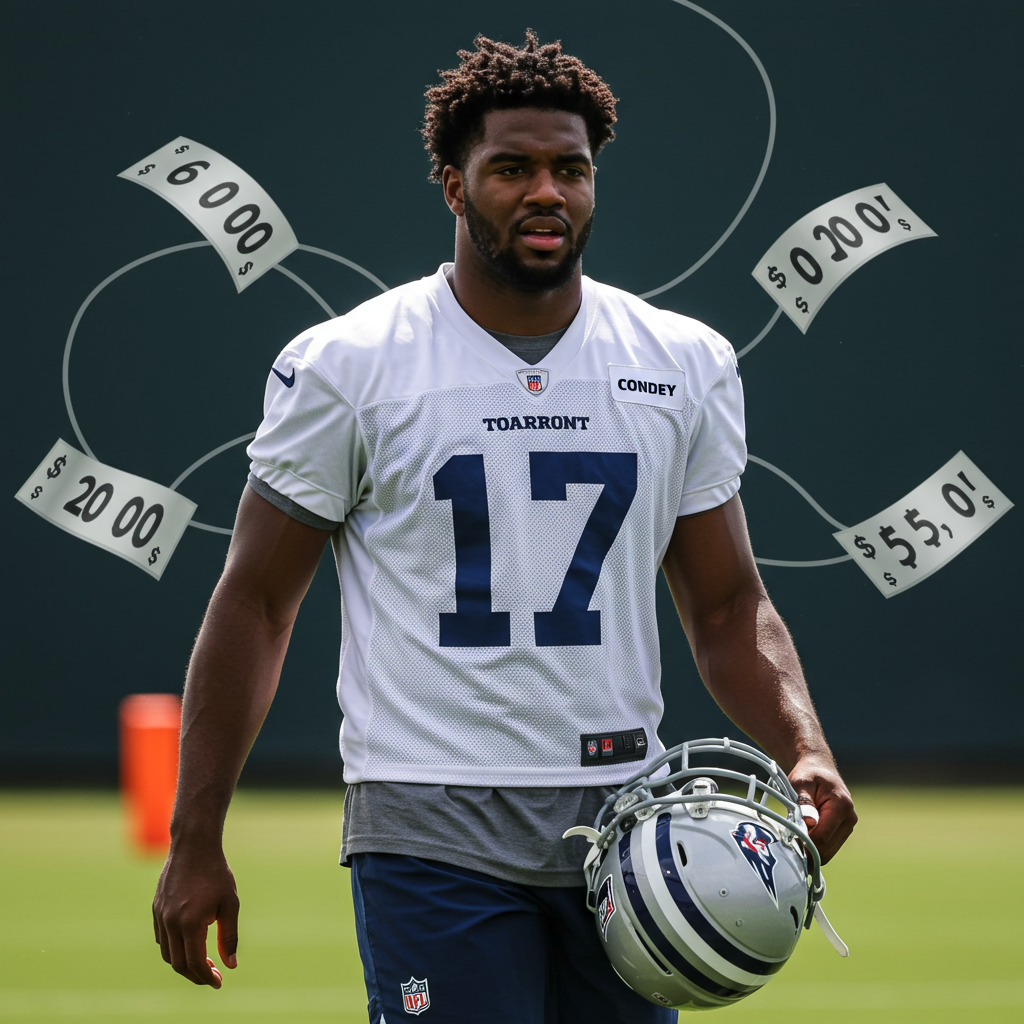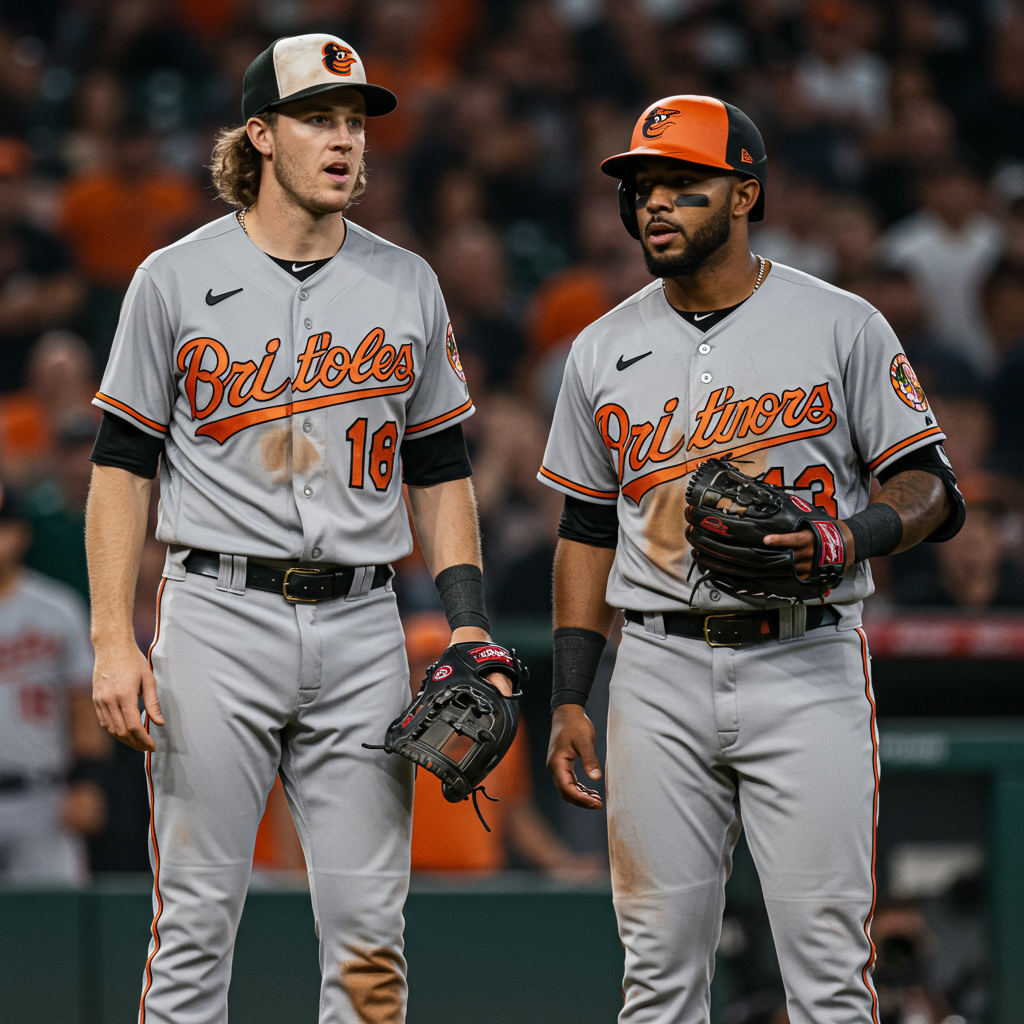As NFL training camps kick off, the spotlight isn’t just on impressive plays and burgeoning talent; it’s also fixed firmly on the high-stakes world of contract negotiations. Each summer, a handful of star players opt for “holdouts” or “hold-ins,” seeking new deals that reflect their true market value, often pushing for more guaranteed money. This annual saga creates significant drama, impacting team chemistry and preseason preparations. From swiftly resolved extensions to tense standoffs, understanding these NFL contract holdouts offers a crucial look at the business behind professional football.
The Shifting Landscape of NFL Player Contracts
The start of training camp often serves as a deadline for teams and players to finalize agreements. For athletes, securing a new contract, especially one with significant guaranteed money, provides long-term financial security. For teams, it’s a balancing act of retaining top talent while managing salary cap limitations. This dynamic often leads to intense negotiations, particularly as player agents push for contracts that reset market values.
Rookie Deals: A New Standard for Guarantees
A notable trend in recent NFL negotiations involves rookie contracts, especially for those drafted in the second round. Traditionally, guaranteed money for second-round picks wasn’t fully assured, but this has begun to change. Players like Cincinnati Bengals first-round draft pick Shemar Stewart and Los Angeles Chargers rookie wide receiver Tre Harris ended months-long standoffs by securing fully guaranteed deals. Stewart’s $18.97 million contract, with a reported $10.4 million signing bonus, notably softened a controversial clause that could void guaranteed money for “detrimental” conduct. Similarly, Alfred Collins (No. 43 pick) and other second-rounders secured over $9 million guaranteed. This precedent, set by players like Carson Schwesinger and Jayden Higgins, who secured “unprecedented, fully guaranteed deals” earlier in May, highlights a significant power shift. It demonstrates rookies’ increased leverage and their collective desire for financial security from day one.
Resolved Negotiations: Players Back on the Field
While some disputes linger, several key players have successfully navigated the negotiation table, returning to their teams without prolonged absence.
Courtland Sutton: A “Drama-Free” Extension for the Broncos
One of the most anticipated contract situations involving NFL holdouts was with Denver Broncos wide receiver Courtland Sutton. Fortunately for Denver fans, his case proved remarkably “drama-free.” Sutton, who was in the final year of a four-year, $14.1 million extension signed in 2021, secured a new four-year, $92 million extension. Head Coach Sean Payton confirmed the team was “real close” to finalizing the agreement, and Sutton notably continued practicing throughout the talks, though he refrained from team drills. This resolution came after Sutton’s stellar performance last season, where he achieved career bests with 81 receptions, 1,081 receiving yards, and eight touchdowns. His consistent play was instrumental in the Broncos’ first playoff appearance since Super Bowl 50. Sutton’s presence on the field also speaks to the team environment; he’s been seen in viral videos alongside elite cornerbacks like Pat Surtain II, highlighting the competitive, high-level atmosphere he’s part of.
Jake Ferguson: Quietly Extending in Dallas
While much of the attention in Dallas has focused on other stars, Cowboys tight end Jake Ferguson quietly signed a significant four-year extension worth $52 million in new money. This under-the-radar deal underscores his importance as a top target for quarterback Dak Prescott. Ferguson’s swift resolution stands in stark contrast to the ongoing public drama surrounding a prominent defensive teammate.
High-Profile Stalemates: Who’s Still Holding Out?
Not all NFL contract negotiations conclude as smoothly as Sutton’s or Ferguson’s. Several high-profile players remain in tense standoffs with their respective teams.
Micah Parsons: The Cowboys’ Persistent Puzzle
Dallas Cowboys pass rusher Micah Parsons embodies the current NFL training camp drama. While physically present at practices, Parsons is sitting out due to what he terms “back tightness,” explicitly denying he’s a “hold-in.” His situation has become particularly heated, with fans chanting for the Cowboys to pay him. Executive Stephen Jones’s comment that Parsons “has to want to get paid” — labeled as “odd” by analysts — has only fueled the fire. Parsons himself has offered “pointed responses” to previous remarks from Jerry Jones, highlighting the tension. A key factor in Parsons’ demand is the recent reset of the pass rusher market by deals for Myles Garrett and T.J. Watt. These lucrative agreements are elevating Parsons’ perceived value, making his negotiation arguably “the story of NFL training camps this year.”
Terry McLaurin: Commanders’ Costly “Hold-In”
Washington Commanders receiver Terry McLaurin technically ended his holdout by reporting to training camp, thereby avoiding daily fines of $50,000. However, he is not expected to practice until a new contract is in place, effectively making him a “hold-in.” Despite his presence, ESPN reported no progress on a new deal. The Commanders have strategically placed McLaurin on the Physically Unable to Perform (PUP) list due to an ankle injury, providing cover for his continued absence from drills while negotiations proceed. Head coach Dann Quinn has expressed positive sentiment about McLaurin’s presence, indicating the team’s desire to keep the situation amicable despite the ongoing stalemate.
Trey Hendrickson: Bengals’ Sack Leader Demands More
Cincinnati Bengals pass rusher Trey Hendrickson, the NFL’s reigning sack leader, chose not to report to camp. He publicly called the Bengals’ offer “atrociously, atrociously low.” Hendrickson’s primary demand is for guaranteed money extending beyond the first year of his current contract, a point where Cincinnati has been unwilling to concede. Despite the financial dispute, the Bengals’ communication about Hendrickson has been described as “positive and cordial,” suggesting an effort to maintain a good relationship.
Other Notable Contract Situations to Watch
Beyond the headliners, several other players are in various stages of NFL contract negotiations, impacting their teams’ preseason plans.
Key Player Updates Across the League
James Cook (Buffalo Bills RB): Cook is practicing but openly discussing his desire for a new deal. The Bills have been diplomatic, but his importance to the offense could escalate the situation.
Elgton Jenkins (Green Bay Packers OL): Activated from the non-football injury list, Jenkins will participate in individual drills while seeking a new deal. His case is contextualized by the Packers’ record-setting signing bonus for fellow offensive lineman Zach Tom, and a potential move from guard to center could influence his contract value.
- Jauan Jennings (San Francisco 49ers WR): Jennings is practicing despite a calf injury and sought an extension. While head coach Kyle Shanahan disputed reports of a trade request, his situation appears “settled for the time being,” suggesting a temporary truce.
- sports.yahoo.com
- sports.yahoo.com
- sports.yahoo.com
- sports.yahoo.com
- sports.yahoo.com
The Business Behind the Game: Why Holdouts Happen
NFL holdouts are rarely about a player’s unwillingness to play; they are a strategic maneuver in a high-stakes business. Players understand their peak earning window is short. They seek to maximize their value, especially after proving their worth or seeing the market reset at their position. This often boils down to guaranteed money, which offers financial security against injuries or unforeseen circumstances. Teams, on the other hand, must balance rewarding elite performance with managing a strict salary cap and maintaining financial flexibility. The tension arises when these priorities clash.
Frequently Asked Questions
What defines an NFL “holdout” versus a “hold-in” during training camp?
An NFL “holdout” is when a player, typically under contract, does not report to mandatory training camp or team activities, incurring significant daily fines. This is a tactic to pressure the team into a new contract. A “hold-in” occurs when a player reports to camp to avoid fines but refrains from participating in on-field drills or team activities until a new deal is reached. This strategy allows players like Terry McLaurin to avoid financial penalties while still signaling their dissatisfaction with their current contract.
How do player performances, like Courtland Sutton’s or Pat Surtain’s, influence contract negotiations?
Exceptional player performance directly impacts contract value by demonstrating market worth and future potential. Courtland Sutton’s career-best season, for example, justified his lucrative extension with the Broncos, as his production was crucial to the team’s success. Similarly, the viral video showing top wide receivers struggling against Broncos cornerback Pat Surtain II, a teammate of Sutton’s, highlights Surtain’s elite status. Such visible dominance validates a player’s market value, often leading to increased leverage in future contract talks or even influencing teammates’ perceptions of value within the organization.
Why are fully guaranteed contracts a major sticking point in current NFL rookie and veteran negotiations?
Fully guaranteed contracts are a critical demand because they provide complete financial security for players, protecting them against career-ending injuries or sudden team cuts. Unlike typical NFL contracts, which often guarantee only the first year’s salary, a fully guaranteed deal ensures the player receives the full agreed-upon amount regardless of future circumstances. For teams, this represents a significant financial risk and reduces flexibility. This conflict over guaranteed money is a primary reason for many NFL contract holdouts, as players seek the security common in other major sports, while teams prefer the flexibility of partial guarantees.
The Dynamic World of NFL Contracts
The start of every NFL training camp brings with it a fascinating blend of gridiron action and behind-the-scenes financial chess. The ongoing NFL contract holdouts underscore the complex relationship between player value, market trends, and team management. As the preseason unfolds, how these negotiations conclude will not only shape individual careers but also impact team dynamics and potentially set new precedents for future player contracts across the league. Fans and analysts alike will continue to monitor these developments, understanding that the business of football is as compelling as the game itself.



